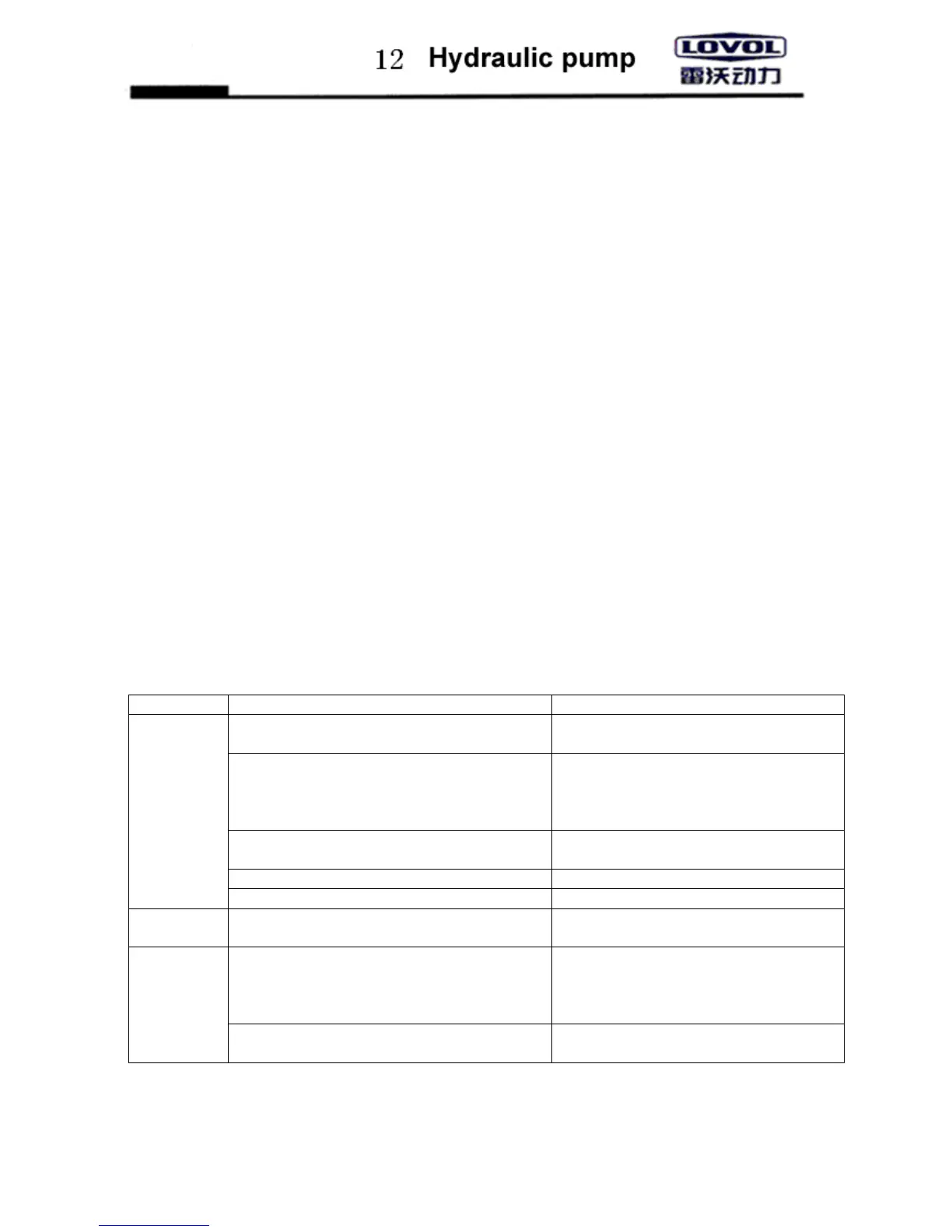The use and maintenance of hydraulic pumps
To take YBZ2 series steer vane pump as an example.
As the power source of steering, the pump is suitable for the steering systems of trucks, as well as other vehicles
and industrial machines. The advantages include good performances, compact structure, low noise, reliability and
durability. Flow control valves are installed in the pump, the flow rate of which varies within the range of 10L/min
and 20L/min. safety valves are installed in the return pipes with adjustable pressure, the maximum of which is 14MPa.
The safety valves prevent the hydraulic system from overload.
Working medium: to ensure the performance of the hydraulic pumps, N46 antiwear hydraulic oil or 15W/40CD
diesel is recommended in summer or temperate regions, while N32 antiwear hydraulic oil is recommended in winter
or cold regions. If other types of fluids are used, their viscosity should be within the range of 20 mm
2
/s ~40mm
2
/s.
Required working temperature: 10 to 80 .℃
Filter efficiency: 20µm.
1. Use and maintenance:
as a high precision pump, steer vane pump should be used and maintained correctly to ensure its performance
and durability. The following rules should be strictly obeyed:
1.1 use correct types of hydraulic oil, otherwise the efficiency and durability of the pump will be affected.
1.2 The hydraulic oil must be kept clean. The hydraulic oil should be changed, and oil tank, filter and pipes
should be cleaned carefully after 2500km running of new vehicles. Thereafter the hydraulic oil should be
changed for every 20000km running. Meantime the oil should be checked frequently, and the filter
elements should be replaced periodically.
1.3 The vacuum of the oil suction parts of the pump should be no less than 15kPa.
1.4 Frequently check for leakage, abnormal running, collision or noises, to find and eliminate malfunctions in
time.
2. Common faults and solutions:
phenomena reasons Solutions
The filters or pipes are blocked. Replace the filter element, clean the pipes or
change the fluid.
Leakage in the pipes causes air to enter the pump.
Check or fasten relevant threaded
connections or change sealing parts to
prevent air from intruding. Open the
junction of fuel pipe to deair.
Enlarged clearance between worn components
causes leakage.
Check relevant parts and repair.
Too low oil viscosity. Use fluids with suitable viscosity.
the oil is not
sucked or
pressurized
(the actuator
does not
work)
Too low oil level. Add oil to required level.
oil leakage in
interfaces
Loosened joints or damaged sealing parts. Fasten threaded connections or replace
sealing parts.
Air intrudes the pump. Check whether there is leakage in relevant
parts. Add oil in the junctions, decreased
noise will indicate a leakage. Fasten the
junctions or replace sealing parts.
loud noises
Serious resistance or even jam in the suction
pipe.
Check the flow and capacity of the filter.
3. Preservation
The blades should be stored in a dry warehouse without corrosive gas. It is strictly forbidden to store them in
high temperature or the temperature under -20 for a long time, in order to prevent rubber parts from ageing. Often ℃
check for possible corrosion. Replace anti-corrosive fluids if necessary.
12.02
